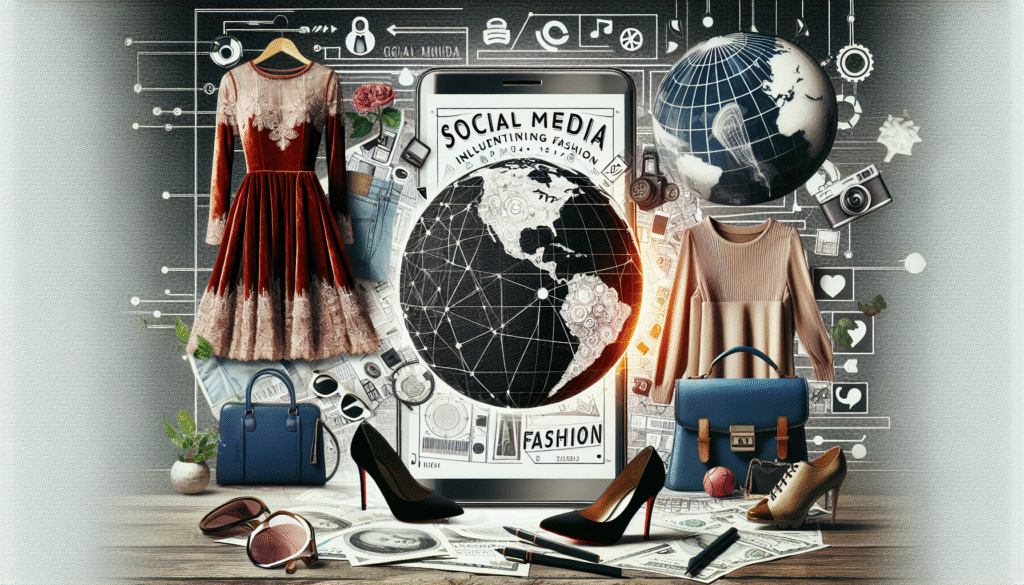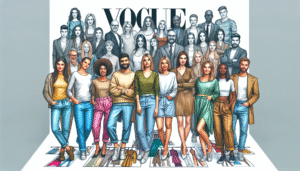
The Runway in Your Pocket: How Social Media Transformed Fashion
Social media’s impact on the fashion industry is undeniable, revolutionizing how trends emerge, brands connect with consumers, and individuals express their personal style. Platforms like Instagram, TikTok, Pinterest, and Facebook have become virtual runways, influencing everything from high fashion to everyday attire. This dynamic shift has democratized fashion, offering unprecedented access and opportunities for both creators and consumers.
The Rise of Influencer Culture: One of the most significant impacts of social media is the rise of influencer marketing. Fashion influencers, boasting dedicated followings, have become powerful voices, shaping consumer preferences and driving sales. Their carefully curated feeds showcase the latest trends, often partnering with brands to promote products through sponsored posts, reviews, and affiliate links. This personalized approach to marketing resonates deeply with audiences, fostering trust and encouraging engagement. Micro-influencers, with smaller but highly engaged followings, offer a more niche and authentic connection, further diversifying the fashion landscape.
Democratization of Design and Trends: Social media has broken down traditional barriers to entry within the fashion world. Emerging designers can bypass established gatekeepers like magazines and fashion shows, using platforms like Instagram to showcase their creations directly to potential customers. This direct-to-consumer approach allows for greater creative freedom and fosters a more inclusive environment. Trends now emerge organically from street style, viral challenges, and user-generated content, bypassing the traditional top-down dictation from fashion houses. This democratization empowers individuals to become trendsetters, influencing the very fabric of the industry.
Fast Fashion and the Consumption Cycle: The immediacy of social media fuels the fast fashion cycle. Trends spread rapidly across platforms, creating a constant demand for new styles. Brands leverage this by producing inexpensive imitations of high-fashion looks, making them readily accessible to a wider audience. While this accessibility can be seen as positive, it also contributes to overconsumption and environmental concerns. The pressure to keep up with ever-changing trends encourages disposable consumption, impacting the planet and perpetuating unethical labor practices.
The Power of Visual Storytelling: Fashion thrives on visuals, and social media provides the perfect platform for visual storytelling. High-quality images and videos, combined with engaging captions and hashtags, create a compelling narrative around brands and products. Platforms like Instagram and Pinterest offer curated mood boards and shoppable posts, streamlining the purchasing process. Short-form video platforms like TikTok have become breeding grounds for creative fashion content, with challenges and tutorials sparking viral trends and engaging younger demographics.
Building Community and Brand Loyalty: Social media facilitates direct interaction between brands and consumers. Brands can leverage social listening tools to understand consumer preferences, gather feedback, and tailor their offerings accordingly. Interactive features like polls, Q&A sessions, and live streams foster a sense of community and build brand loyalty. This two-way communication creates a more personalized and engaging shopping experience, strengthening the relationship between brands and their audience.
The Importance of Authenticity and Transparency: Consumers are increasingly seeking authenticity and transparency from brands. Social media provides a platform for brands to showcase their values, ethical practices, and behind-the-scenes glimpses into their operations. This transparency builds trust and fosters a deeper connection with consumers who align with those values. Influencers also play a role in demanding transparency, often partnering with brands that prioritize sustainability and ethical production.
Challenges and Considerations: Despite the numerous benefits, social media presents challenges for the fashion industry. The constant pressure to stay relevant and create engaging content can be overwhelming. Maintaining authenticity while navigating sponsored content requires careful consideration. The prevalence of counterfeit products and unauthorized use of intellectual property poses legal and ethical dilemmas. Furthermore, the curated nature of social media can contribute to unrealistic beauty standards and body image issues.
Navigating the Digital Landscape: To thrive in the social media age, fashion brands must adopt a strategic approach. Investing in high-quality content creation, engaging with their audience authentically, and leveraging data analytics are crucial. Collaborating with relevant influencers, embracing emerging technologies like augmented reality and virtual try-on experiences, and prioritizing sustainability are key to navigating the evolving digital landscape. By understanding the nuances of each platform and tailoring their strategies accordingly, brands can harness the power of social media to connect with their target audience, build brand loyalty, and drive business growth.
The Future of Fashion and Social Media: The intersection of fashion and social media continues to evolve at a rapid pace. New platforms and technologies are constantly emerging, offering innovative ways for brands and consumers to interact. The increasing focus on sustainability, inclusivity, and ethical practices will continue to shape the industry. As the lines between the physical and digital worlds blur further, social media will undoubtedly play an even more integral role in shaping the future of fashion.
















